Every garden has room for a few crocuses. These small plants suddenly appear after the long months of winter then die down early, leaving space for later-growing plants in the border.
Spring-flowering crocuses grow from a small corm, with narrow leaves that have a pale stripe along the length. They die back to survive underground during the dry summer in their natural habitats – the meadows, hills and mountains of Europe, North Africa, Turkey and Central Asia (some have become naturalised in parts of nothern Europe and North America).
The spring crocus season is brief – they sparkle for a few short weeks before the flowers fade. But their job is done. Snowdrops may be the harbingers of spring, but it is crocuses that signal its arrival.
Jump to
- How to grow crocus
- When to plant crocus bulbs
- How to plant crocus bulbs
- Where to plant crocus bulbs
- How to grow crocus in a lawn
- What eats crocus bulbs?
- The best crocus to grow
- Where to buy crocus bulbs
How to grow crocus
When to plant crocus bulbs
Plant crocus corms in autumn.
How to plant crocus bulbs
Plant them around 5-7cm deep, pointed end up. The large corms of the Dutch hybrids can be planted even deeper. Crocus corms grow contractile roots that pull them down to the right depth if you've planted them too shallow.
Where to plant crocus bulbs
Crocuses that are widely sold in the UK are best suited to a wetter climate. The main requirements for most crocus are a sunny position and soil that isn't waterlogged. Some, such as C. angustifolius, need very good drainage. Plant crocus bulbs under deciduous shrubs, around trees, among herbaceous perennials or in a container.
In brief
- What: Small, hardy early flowering corms, with flowers in a range of colours
- Season: Flowering in spring, dormant in summer
- Size: 5-15cm tall
- Growing requirements: Sunny position in a border, beneath deciduous trees and shrubs or in lawns. Also good for pots.
- Hardiness: RHS H6, USDA 3a-8b.
How to grow crocus in a lawn
You can dig individual holes for each corm, and cover with the removed plug of turf, but this can be laborious if you have a lot of corms to plant. A quicker method is to cut out the area of turf where you want to plant and lift it away or roll it back to expose the soil. Lightly break up the soil surface and carefully push in the corms. Then place the turf back over them. When you grow crocuses in a lawn, the grass can be cut by mid to late spring.
It can take a while to achieve a carpet of crocus, but if you plant species that self seed, you'll be able to enjoy the results after a few years. C. tommasinianus and C. chrysanthus do this well.
What eats crocus bulbs?
Squirrels and other rodents are fond of crocus bulbs. The deeper you plant them, the less likely they are to be dug up. You can also place some chicken wire over the area you have planted, and cover with soil or turf to hide it. Use a wire gauge with holes around 5-10mm wide. The crocuses will grow through it but it should deter squirrels and mice from digging down.
Another problem is birds pecking at the flowers and buds as they emerge. To deter them, some gardeners push sticks in the ground with black cotton strung between, which is not always effective or attractive, but is preferable to using a cage or mesh. Alternatively, grow in pots in a greenhouse or bring indoors when they start to flower.
The best crocus to grow
Crocus tommasinianus
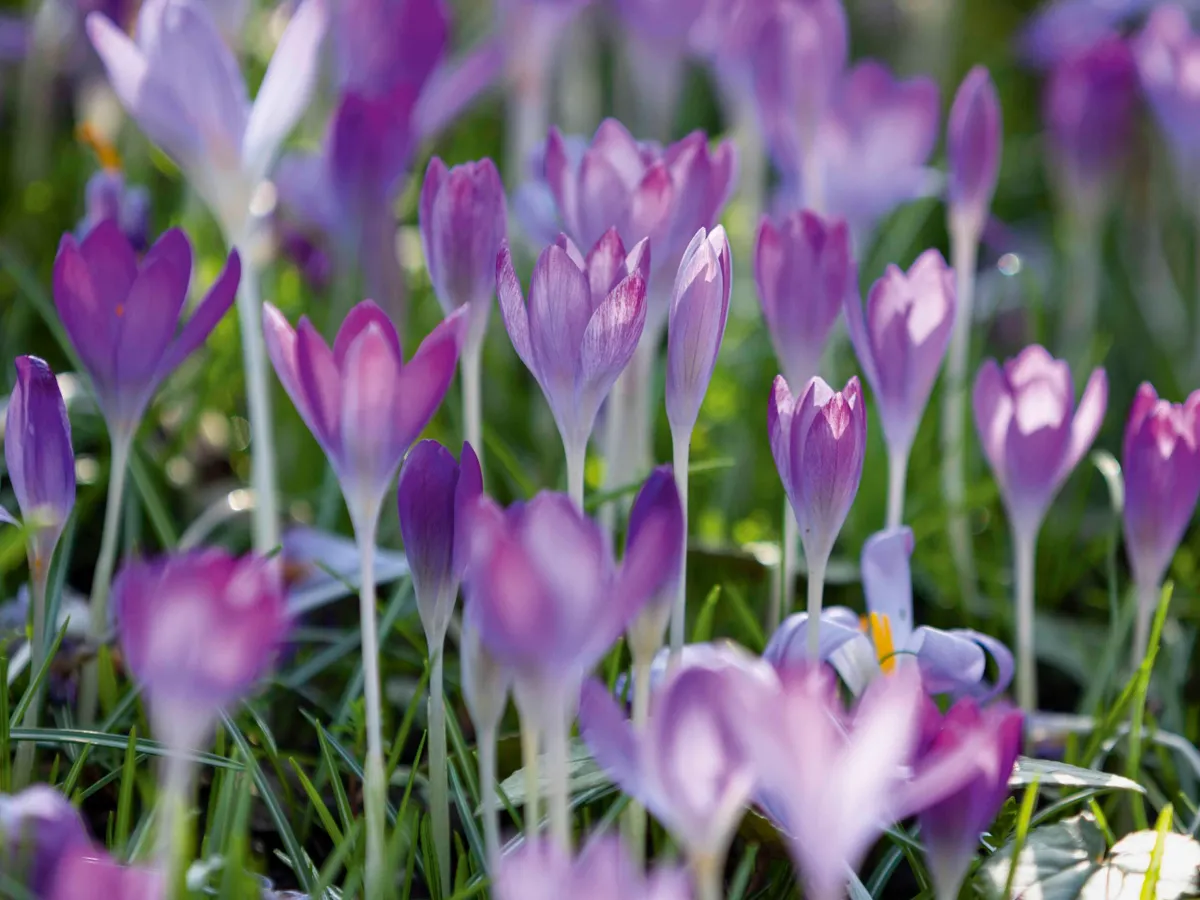
This Balkan species is one of the earliest crocuses to flower, as early as February in the UK. It is superb for naturalising in grass, where it will form a carpet of colour – en masse the blooms are affectionately known as 'Tommies'. 7-10cm. AGM.
Crocus 'Jeanne d'Arc'

One of the popular large-flowered Dutch hybrid crocuses, with glistening white flowers marked with purple feathering on the outside. Inside the flower is a frilly orange stigma. 10-15cm.
Crocus 'Pickwick'
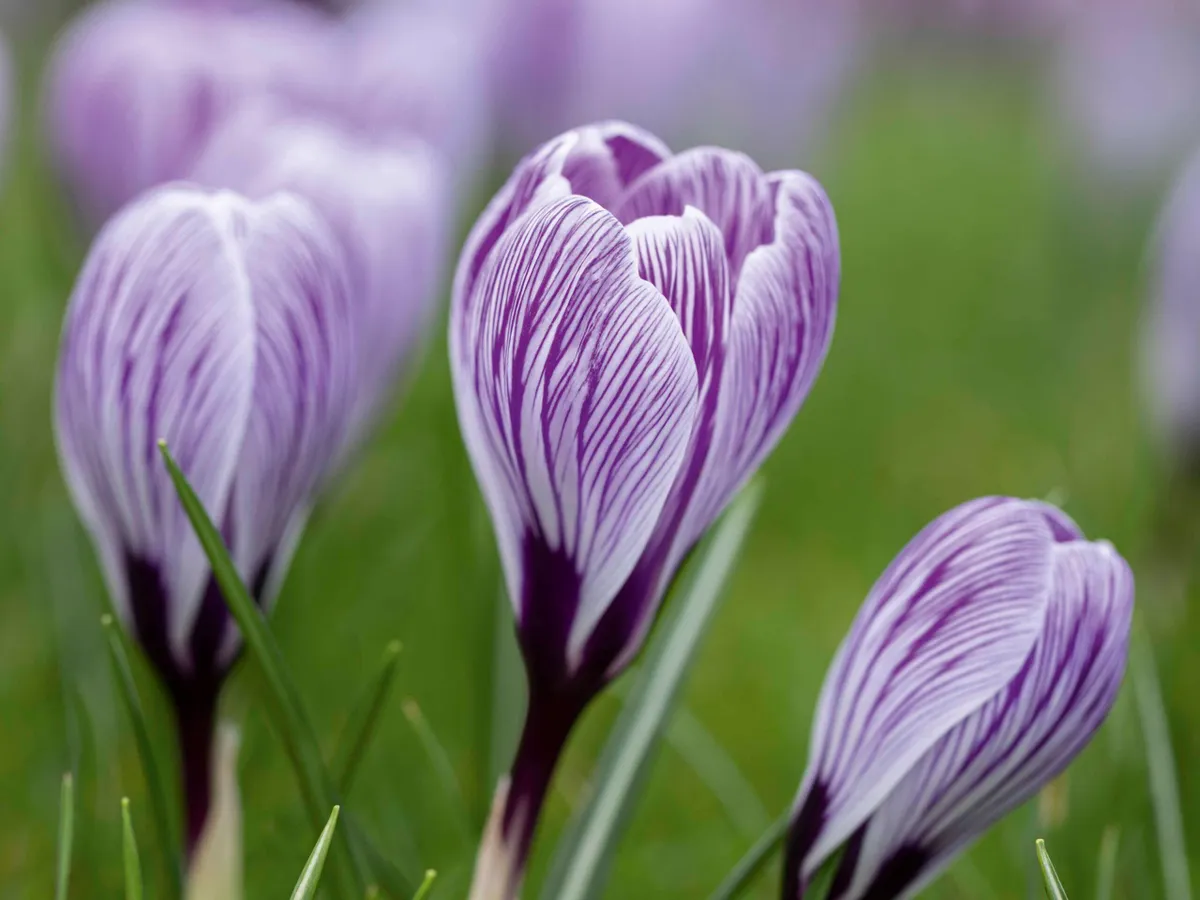
A strong-growing Dutch hybrid, ideal for a lawn and flowering after the early species, extending the season. The feathered purple blooms are quite striking and there can often be several per corm. 10-15cm.
Crocus malyi 'Ballerina'
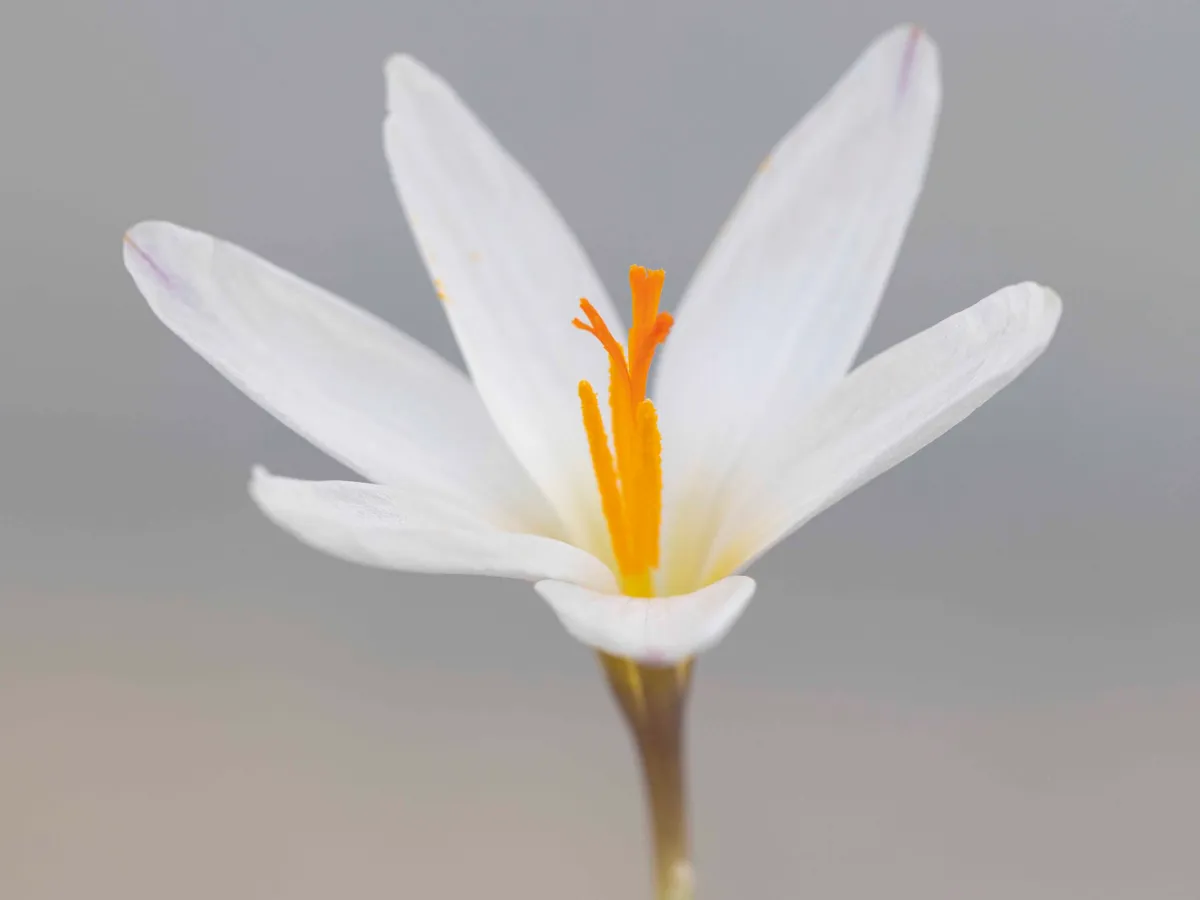
This species is from Croatia and flowers a little later. It is pure white with a pale yellow throat and tiny violet spots on the tips of the outer petals. Likes good drainage. 7-10cm.
Crocus angustifolius

A distinctive species from southern Ukraine and Crimea, with strong purple markings on the back of the petals. It prefers a warm, dry summer so it is best grown in the free-draining soil of a raised bed, rock garden or pot. 7-10cm. AGM.
Crocus 'Gypsy Girl'
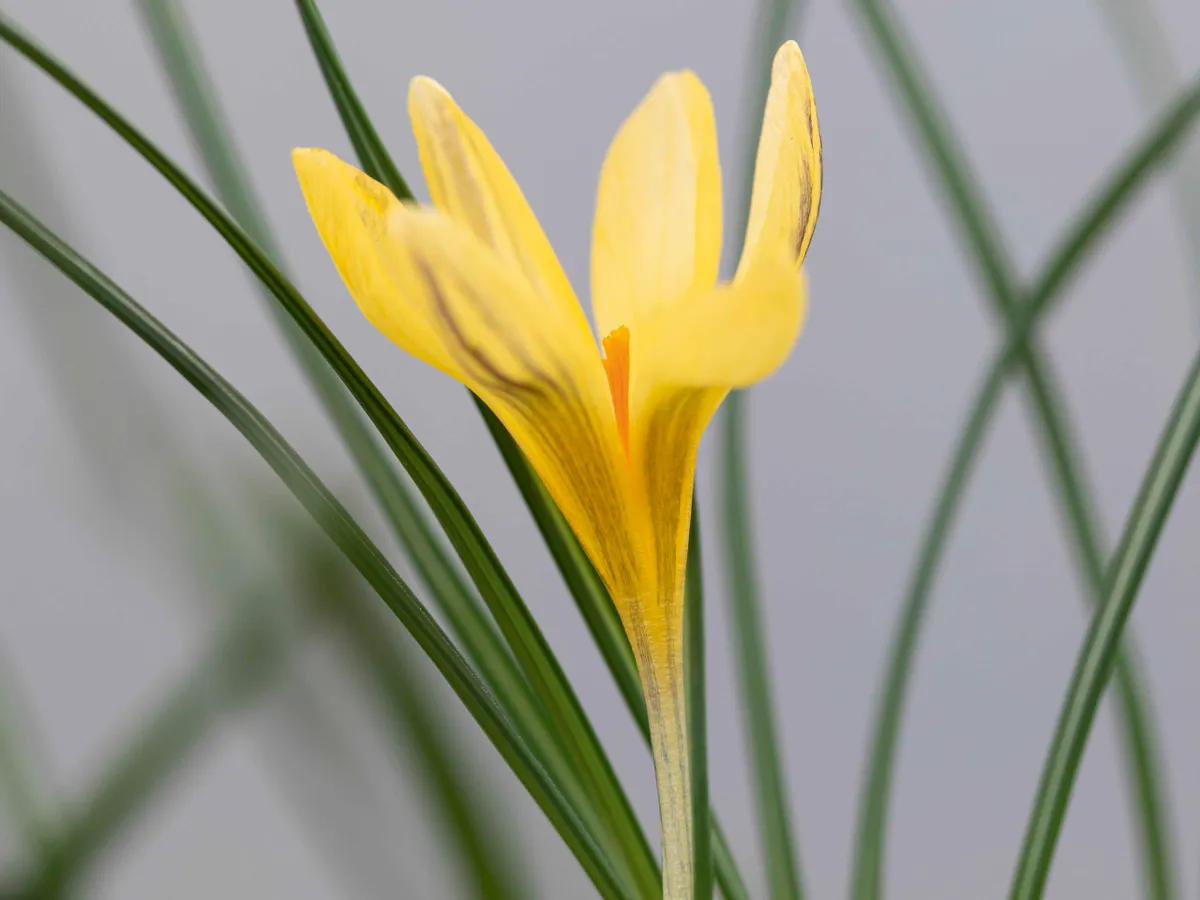
One of the C. chrysanthus hybirds. It has lightly fragrant, lemon-yellow flowers with bronzy purple stripes on the outside. An early flowering cultivar that is good for naturalising. 7-10cm.
Crocus tommasinianus 'Barr's Purple'
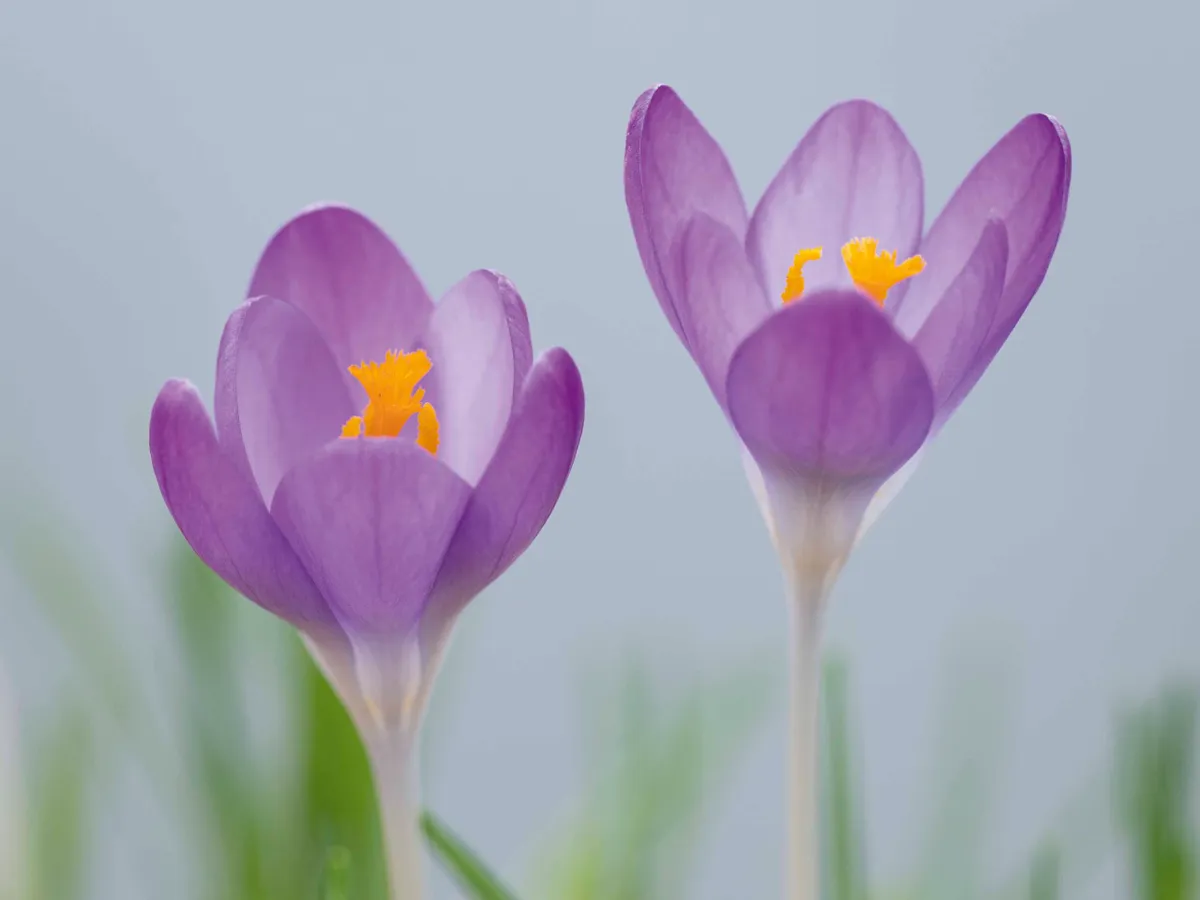
There are several named forms of this species, mostly in varying shades of purple. This is a deeper colour than the typical species and is named after the Victorian nurseryman Peter Barr. 7-10cm.
Crocus 'Blue Pearl'
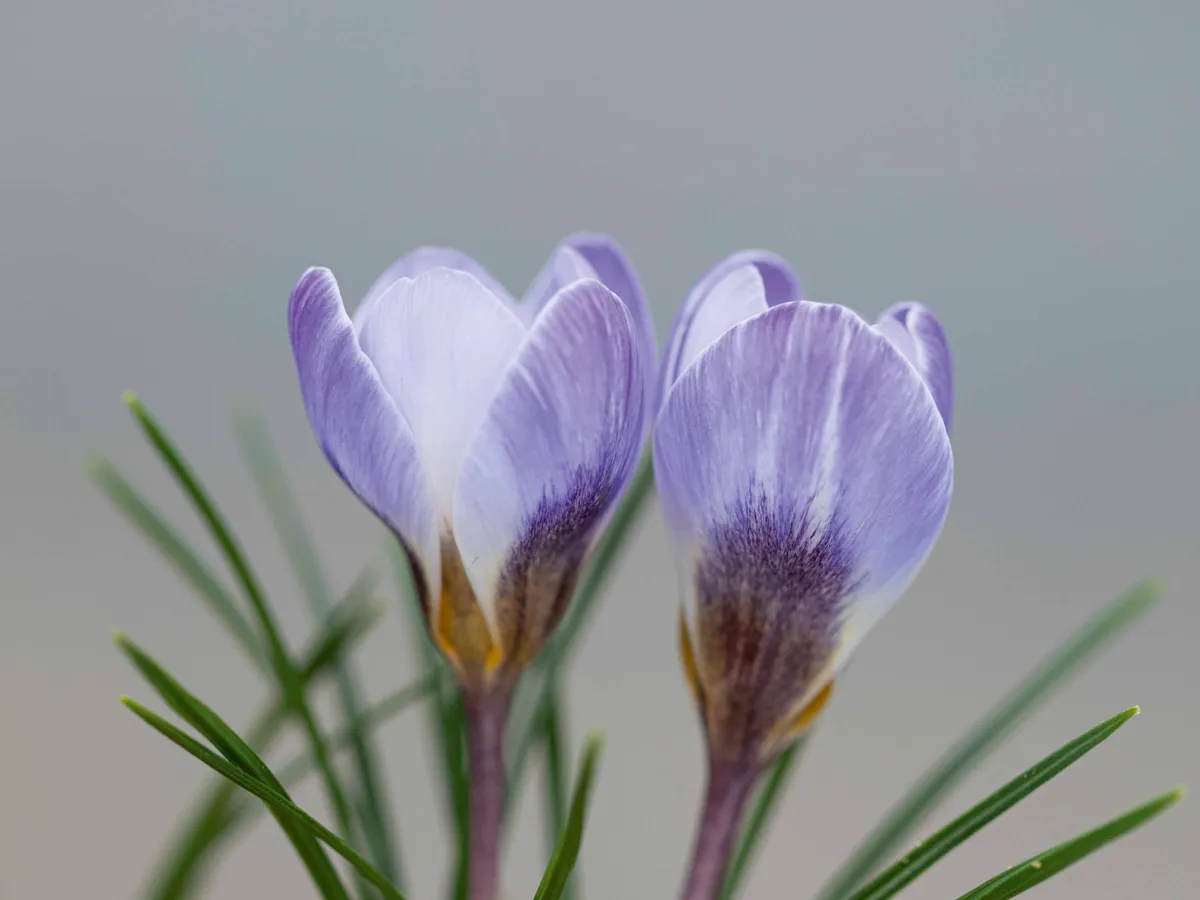
This probable C. biflorus x C. chrysanthus hybrid is as close to blue as you can get. A popular cultivar that needs good drainage but looks great at the front of a sunny border. Can have up to four flowers per corm. 7-10cm. AGM.
Crocus 'Prins Claus'
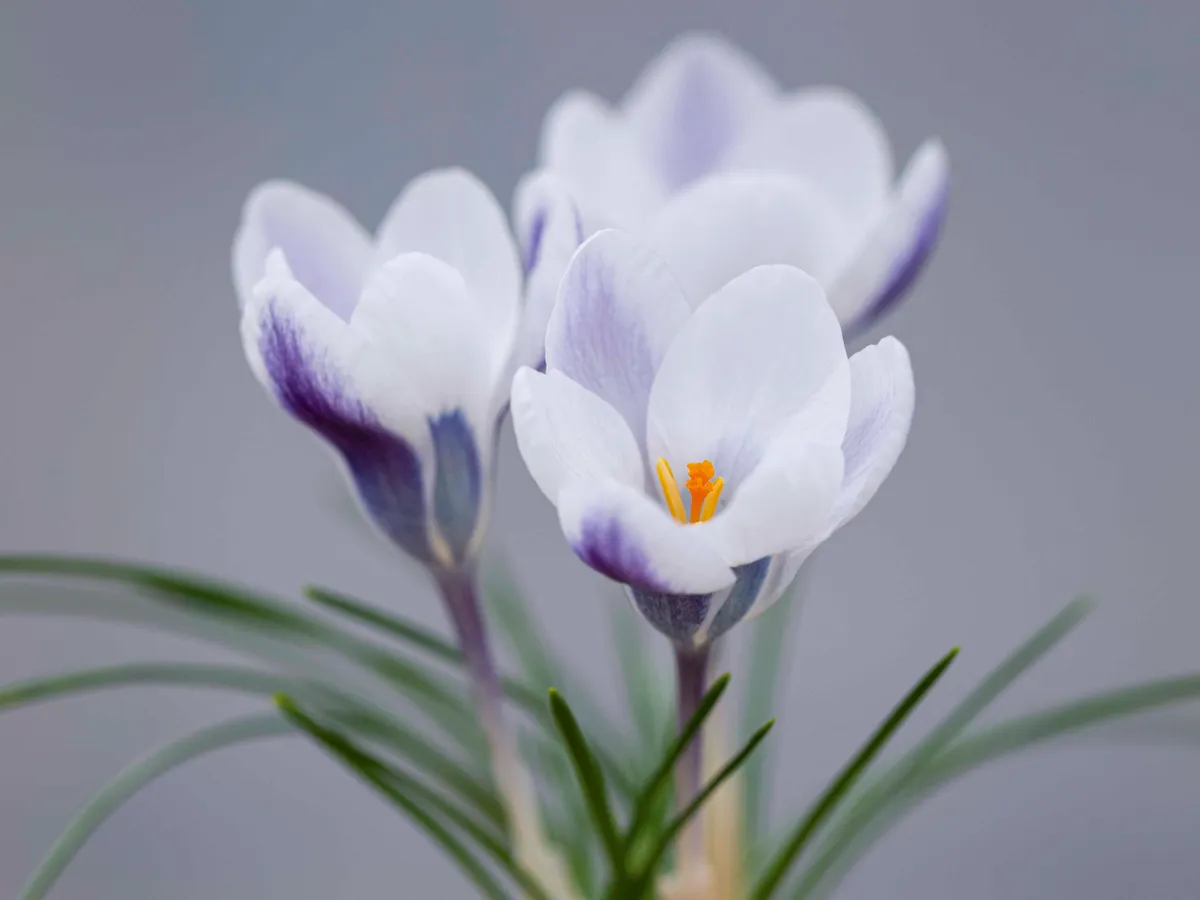
A striking two-toned crocus, with snow white flowers that have a smudge of dusty purple on their outer petals. It's a C. chrysanthus hybrid that naturalises easily and flowers early. 7-10cm.
Crocus nivalis 'Tricolor'
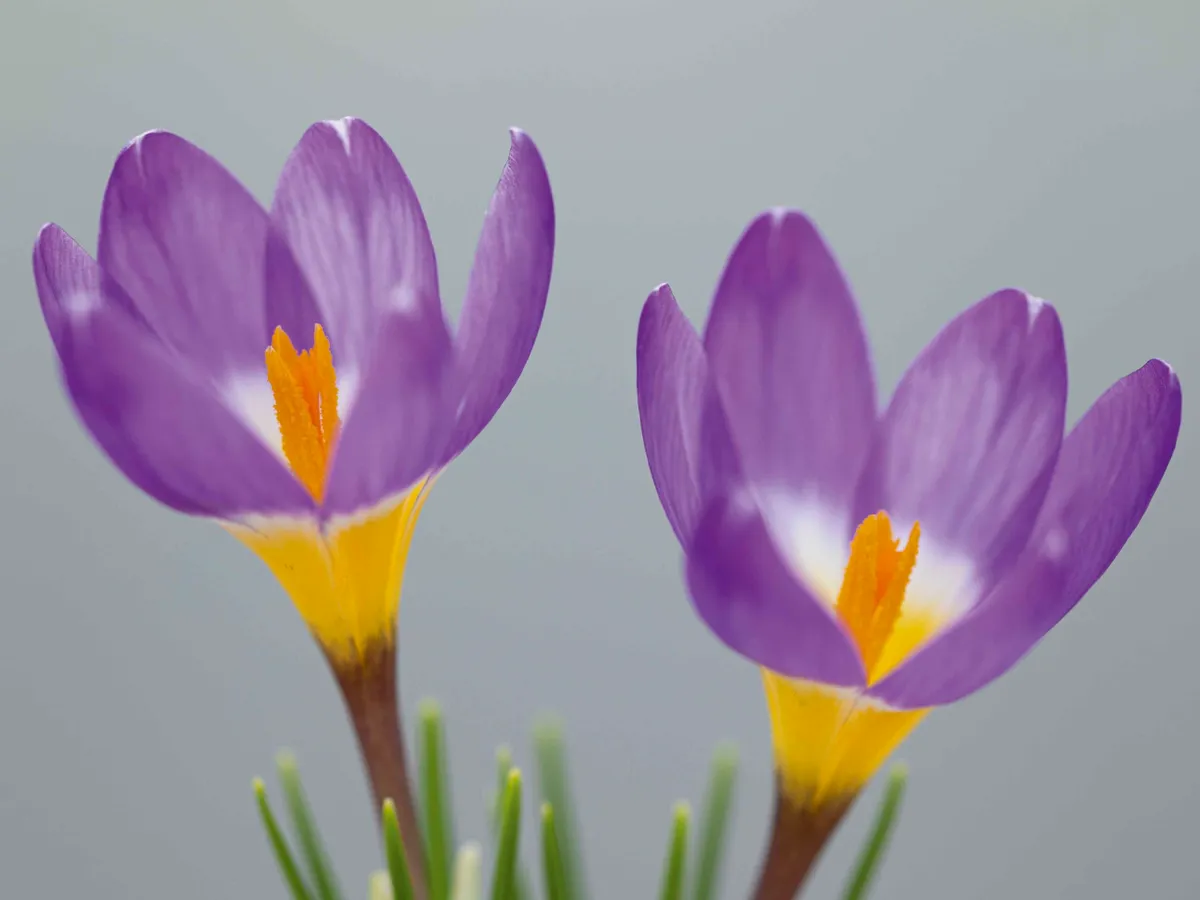
An easily recognised crocus, with its distinct colours in the flower. It's a selection of the Greek species C. nivalis, which was previously recognised as C. sieberi subsp. sublimis. 5-10cm.
Crocus etruscus
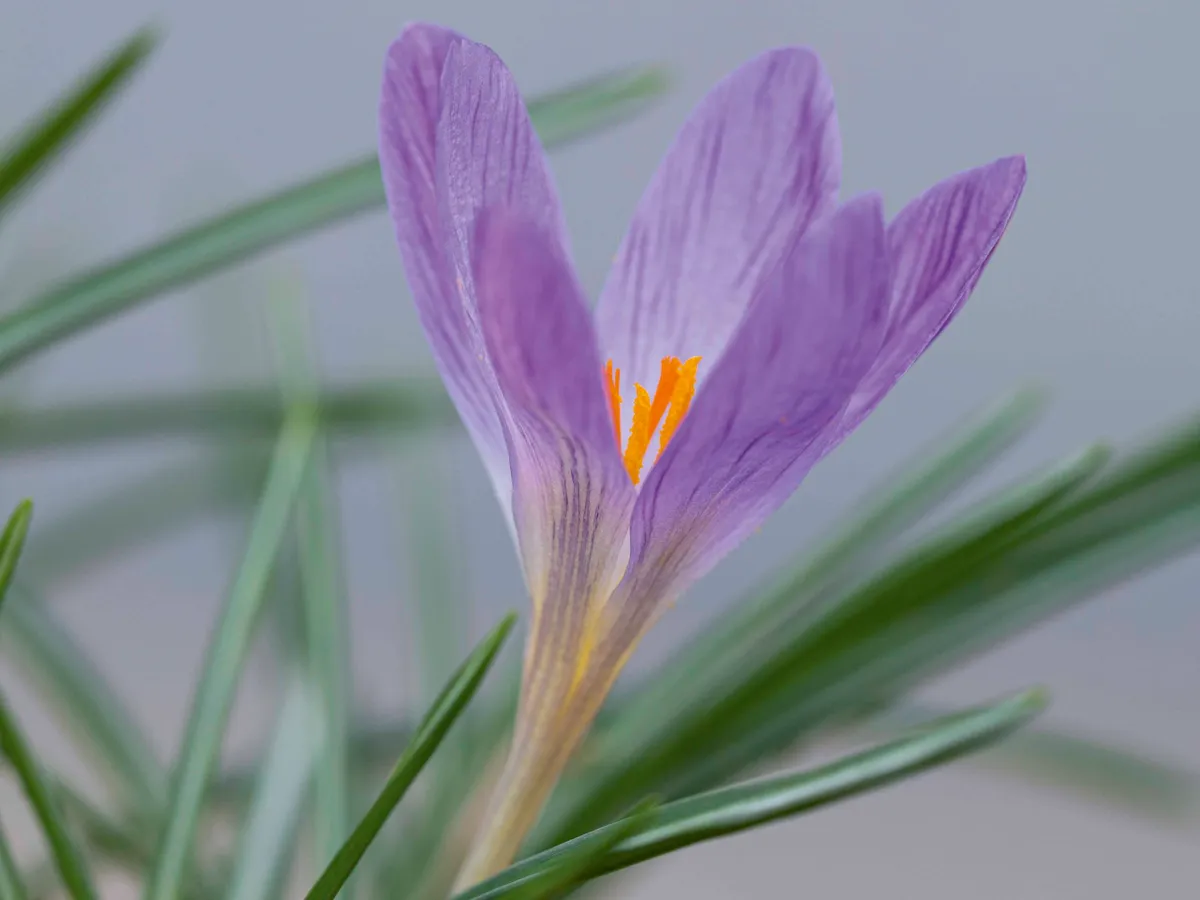
An Italian species, known as the Tuscan crocus, with pale lilac-purple flowers, faintly streaked on the outside. Can tolerate summer moisture so does well in a border. 5-10cm.
Where to buy crocus bulbs
You may also like...